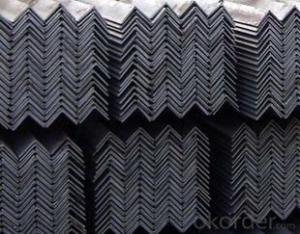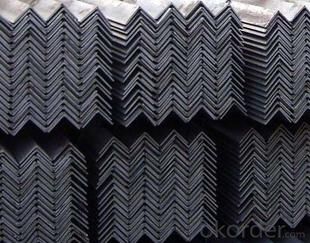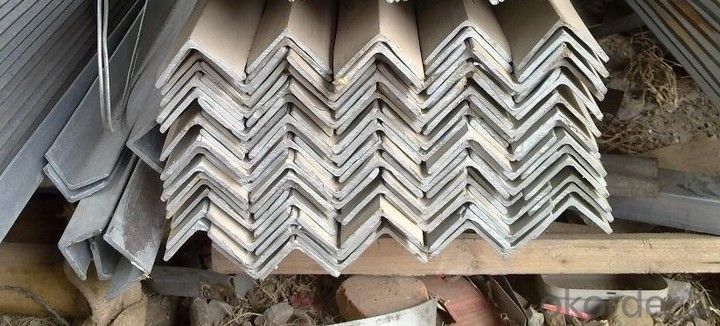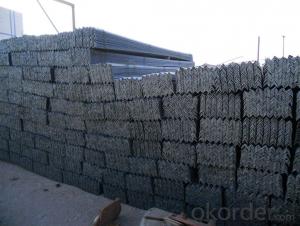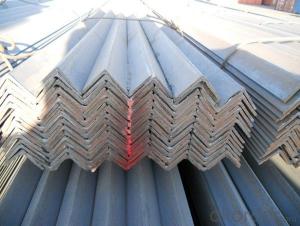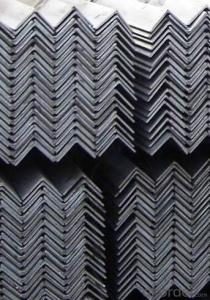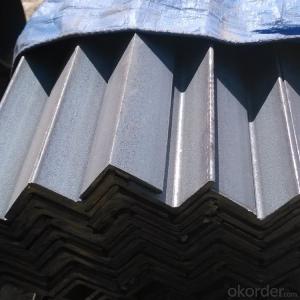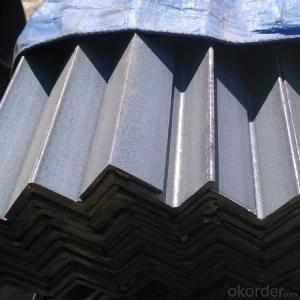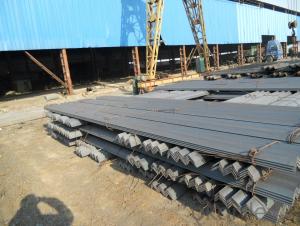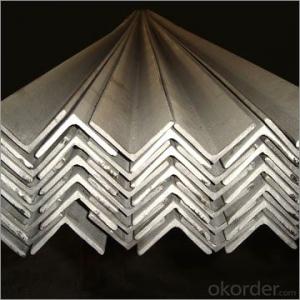A60*60*6 galvanized angle steel for construction
- Loading Port:
- Tianjin
- Payment Terms:
- TT OR LC
- Min Order Qty:
- 25 m.t.
- Supply Capability:
- 10000 m.t./month
OKorder Service Pledge
OKorder Financial Service
You Might Also Like
Product Description:
Packaging & Delivery
| Packaging Detail: | Containers Or With Other Clients' Requirements. |
| Delivery Detail: | within 15 days |
Specifications
angle steel
1. Standard: AISI,ASTM,BS,DIN,GB,JIS
2. Dimension: 10*10mm-200*200mm
3. Length: 3m - 12m
s235jrg hot dip galvanized equal unequal steel angle angle steel
| Standard | AISI,ASTM,BS,DIN,GB,JIS |
| Dimension | 10*10mm - 200*200mm |
| Grade | Q195-Q420 Series |
| Place of origin | Tianjin China (Mainland) |
| Brand Name | DC METAL |
| Model Number | 2#-20# |
| Type | Equal |
| Application | construction |
| Length | 3-12m |
1.MOQ:20 Ton
2.Material:Q195,Q235
3.Size:0.7--3mm
4.Used for:upvc door and window
| Name | steel lining,steel angles,steel framing ,metal frames, The doors and windows strengthen steel |
| Technique | Cool rolled |
| Thickness | 0.7~~3.0mm |
| Dimensions | 12mm*150mm*1.5mm(Size range Or Other Size According To The Contract) |
| Length | 5.8m usually Or Other Size According To The Contract. |
| Steel Material | Q195-Q235 |
| Type | C,L,U,or Profiled steel angle. |
| Application | The doors and windows strengthen steel. |
| Surface | Bared Or Painted, Galvanized Or Clients’ Option. |
| Country of Origin | China(mainland) |
| Package | Containers Or With Other Clients' Requirements. |
| Port | Tianjin |
| Delivery Time | Within 15 days(30% in advance) |
Sdandards: | ASTMA53,ASTMA106,BS1139,BS1387-1985,GB/T3091-2001,EN39
| |||||
Material: | Q195,Q235,Q345,A53,A36,SS400,SS330,ST37-2,08YU,
| |||||
Technical: | welded:longitudinal welded,SSAW
| |||||
Application | Construction structure,furniture,shipbuilding,petroleum, | |||||
Power,gas metallurgy | ||||||
Package | Hex bundle by steel strip | |||||
In bulk | ||||||
anti-water plastic woven | ||||||
As your requirement | ||||||
Place of origin | Tianjin China | |||||
transaction conditition | Trade terms: EXW,FOB,CIF,C&F | |||||
Delivery time: 10-20days after receiving your deposits | ||||||
Payment term: 30% by TT in advance | ||||||
Load port: Tianjin Xingang Port | ||||||
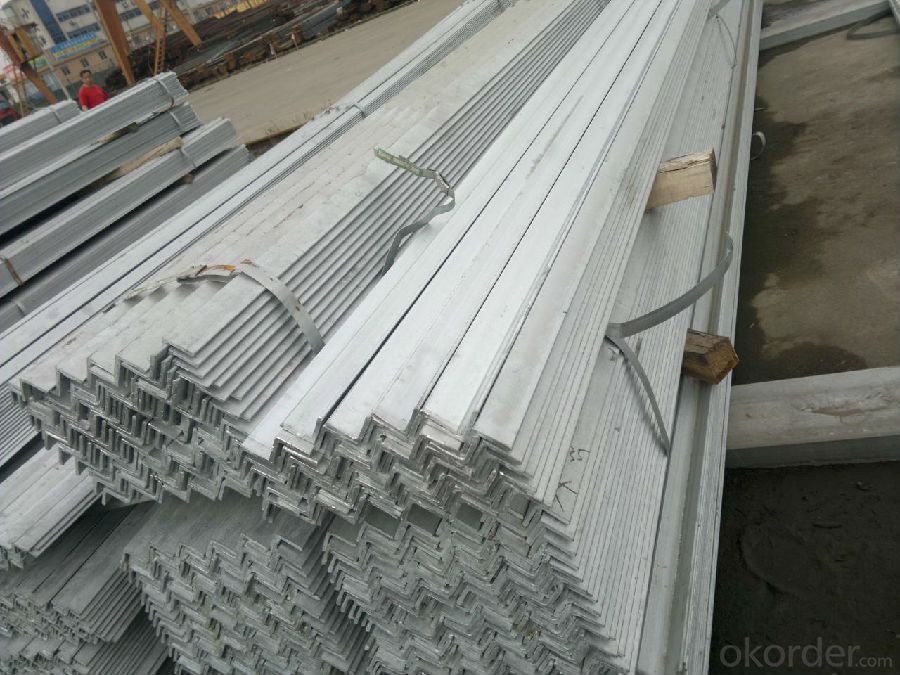
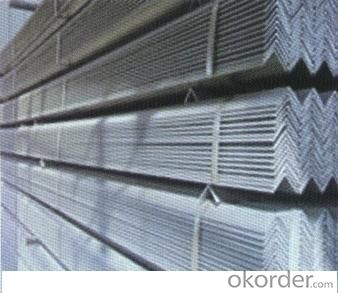
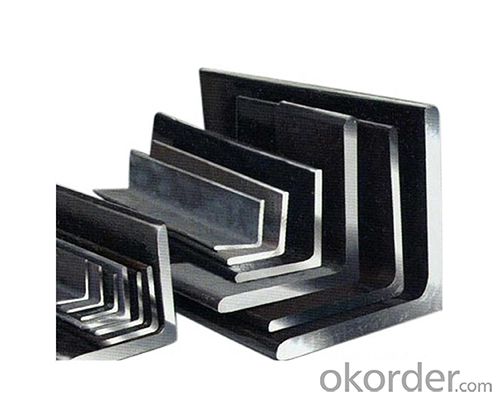
- Q: How do steel angles perform in high-humidity environments?
- Due to their corrosion-resistant properties, steel angles exhibit excellent performance in high-humidity environments. While the air's moisture content often causes metals to rust and corrode, steel angles are specifically engineered to withstand these conditions. Typically manufactured using stainless steel or galvanized steel, both materials possess a protective layer that effectively hinders rust formation. Consequently, steel angles are exceptionally well-suited for utilization in regions with high humidity, such as coastal areas or industrial settings where moisture is abundant. Moreover, their durability and extended lifespan further contribute to their exceptional performance in high-humidity environments.
- Q: How do steel angles perform in terms of vibration resistance?
- Steel angles generally have good vibration resistance due to their strong and rigid structure. The shape of a steel angle, with its L-shaped cross-section, provides additional strength and stability, making it highly resistant to vibrations. When used in construction or engineering applications, steel angles can effectively absorb and dampen vibrations, minimizing the risk of structural damage or failure. The stiffness and high tensile strength of steel angles allow them to withstand dynamic loads and vibrations caused by various factors such as wind, earthquakes, or machinery operations. They can effectively distribute and dissipate vibrational forces throughout their structure, preventing excessive movement or oscillation. This is particularly important in applications where stability and durability are crucial, such as in the construction of bridges, buildings, or industrial equipment. Additionally, steel angles can be designed and manufactured to meet specific vibration resistance requirements. By selecting appropriate steel grades and dimensions, engineers can optimize the performance of steel angles in terms of vibration resistance. They can also incorporate additional features like stiffeners or reinforcements to further enhance the vibration resistance of steel angle structures. Overall, steel angles have proven to be reliable and efficient in withstanding vibrations, making them a popular choice in various industries and applications where structural integrity is of utmost importance.
- Q: How do you determine the required angle thickness for a specific application?
- To determine the necessary thickness of an angle for a particular application, multiple factors must be taken into account. First and foremost, one must understand the load or force that will be placed on the angle. This can be achieved by analyzing the specific application and estimating the weight or pressure that will be exerted on the angle. Next, the material of the angle must be considered. Different materials possess varying strength properties, and their ability to withstand the applied load will differ accordingly. It is crucial to select a material that possesses the necessary strength and durability for the application at hand. Alongside this, the length of the angle and the distance between its supports should also be considered. Longer angles or greater distances between supports may necessitate thicker angles to prevent buckling or bending when subjected to the applied load. Furthermore, environmental factors like temperature, humidity, or corrosive substances may impact the required thickness of the angle. For example, in corrosive environments, a thicker angle may be essential to ensure its longevity and structural integrity. Finally, it is imperative to consult applicable building codes, regulations, or industry standards to ensure compliance and safety. These guidelines often provide specific recommendations or requirements for angle thickness based on the intended application. In conclusion, determining the required angle thickness for a specific application entails analyzing the load, material strength, length, support distance, environmental factors, and relevant regulations. Proper consideration of these factors will help guarantee that the angle can withstand the applied load and provide a safe and durable solution for the given application.
- Q: How are steel angles protected against UV degradation?
- Various methods can be employed to protect steel angles from UV degradation. Applying a protective coating or paint onto the surface of the steel angles is a common approach. These coatings typically contain UV inhibitors that shield against the harmful effects of ultraviolet rays. By absorbing or reflecting the UV radiation, the inhibitors reduce the potential for degradation. Another method is to galvanize the steel angles by coating them with a layer of zinc. This not only provides corrosion resistance but also offers some protection against UV radiation. Zinc possesses natural UV-blocking properties, which aid in minimizing the effects of UV degradation. In addition to coatings and galvanization, utilizing weather-resistant materials during the manufacturing process is another technique. These materials are specifically designed to withstand UV exposure and effectively safeguard the steel from degradation over time. Regular maintenance and inspections are essential to ensure ongoing protection against UV degradation. This includes cleaning the steel angles to remove dirt and debris that may trap moisture and hasten degradation. Periodic reapplication of coatings or touch-ups should also be performed to ensure long-term protection against UV radiation. In conclusion, a combination of protective coatings, galvanization, the use of weather-resistant materials, and proper maintenance can effectively protect steel angles from UV degradation.
- Q: Is there a screw that can be made like angle iron, but not a right angle, just a single piece of material? That's the way to break the angle iron in two. What if it's called? Thank you, professionals!
- Wear protective gloves and glasses when cutting, because metal chips can hurt people, especially the eyes. Ha ha, I hope to help you.
- Q: Can steel angles be used for manufacturing bike racks?
- Yes, steel angles can be used for manufacturing bike racks. Steel angles provide strength and stability required to support the weight of bicycles and withstand outdoor conditions.
- Q: Can steel angles be cold-formed or bent to specific shapes?
- Yes, steel angles can be cold-formed or bent to specific shapes.
- Q: What is the minimum radius for a curved steel angle?
- The minimum radius for a curved steel angle will vary depending on the specific application and the capabilities of the steel fabrication processes being used. However, in general, the minimum radius for a curved steel angle is typically determined by the thickness and type of steel being used, as well as any applicable industry standards or regulations. It is important to consult with a structural engineer or steel fabricator to determine the appropriate minimum radius for a specific curved steel angle.
- Q: What is the difference between galvanized steel angle and ordinary angle iron?
- Ordinary angle iron and hot galvanized steel angle per ton difference of about 2500 yuan.
- Q: What are the common loadings or forces that steel angles are designed to withstand?
- Steel angles are widely utilized in different structural applications because of their versatility and strength. These angles are engineered to endure various loadings or forces, depending on the specific application. Some typical loadings that steel angles are engineered to tolerate include: 1. Compression: Steel angles have the ability to withstand compressive forces, which are forces that tend to compress or squeeze the material. They are frequently employed in columns or supports to bear the weight of a structure or to resist crushing loads. 2. Tension: Steel angles can also endure tensile forces, which are forces that stretch or pull the material. They are commonly used in tension members, like roof trusses or bridge supports, to resist pulling or stretching loads. 3. Bending: Steel angles are designed to resist bending forces, which occur when a material is subjected to a combination of tension and compression. They are commonly used in beams or braces to provide structural stability and prevent excessive deflection or bending. 4. Shear: Steel angles have the capacity to withstand shear forces, which occur when one section of a material is pushed in one direction and another section is pushed in the opposite direction. They are frequently employed in connections or joints to transfer loads between structural members and resist shearing forces. 5. Lateral loads: Steel angles are also engineered to withstand lateral loads, which are forces that act horizontally on a structure. These loads can be caused by wind, earthquakes, or other external factors. Steel angles are often utilized in bracing systems to provide lateral stability and prevent the structure from overturning or collapsing. It is important to note that the specific loadings and forces that steel angles are engineered to withstand may vary depending on the size, shape, and grade of the angle, as well as the specific design requirements of the application. Therefore, it is crucial to consult the appropriate design codes and engineering guidelines to ensure the proper selection and application of steel angles in a given structural design.
Send your message to us
A60*60*6 galvanized angle steel for construction
- Loading Port:
- Tianjin
- Payment Terms:
- TT OR LC
- Min Order Qty:
- 25 m.t.
- Supply Capability:
- 10000 m.t./month
OKorder Service Pledge
OKorder Financial Service
Similar products
Hot products
Hot Searches
Related keywords
